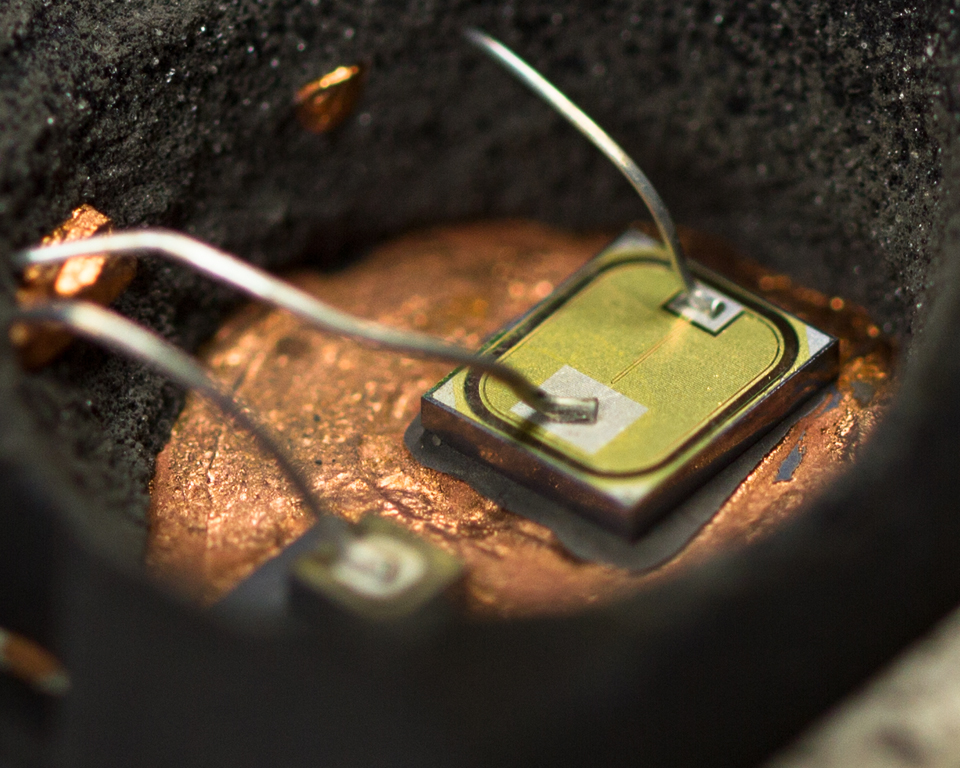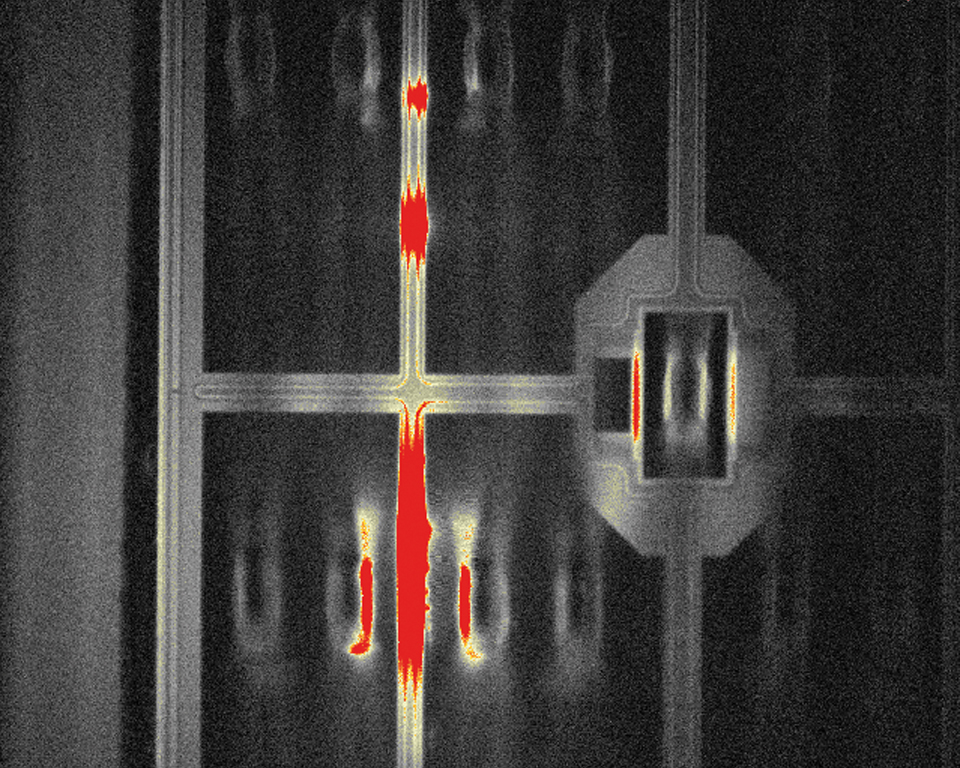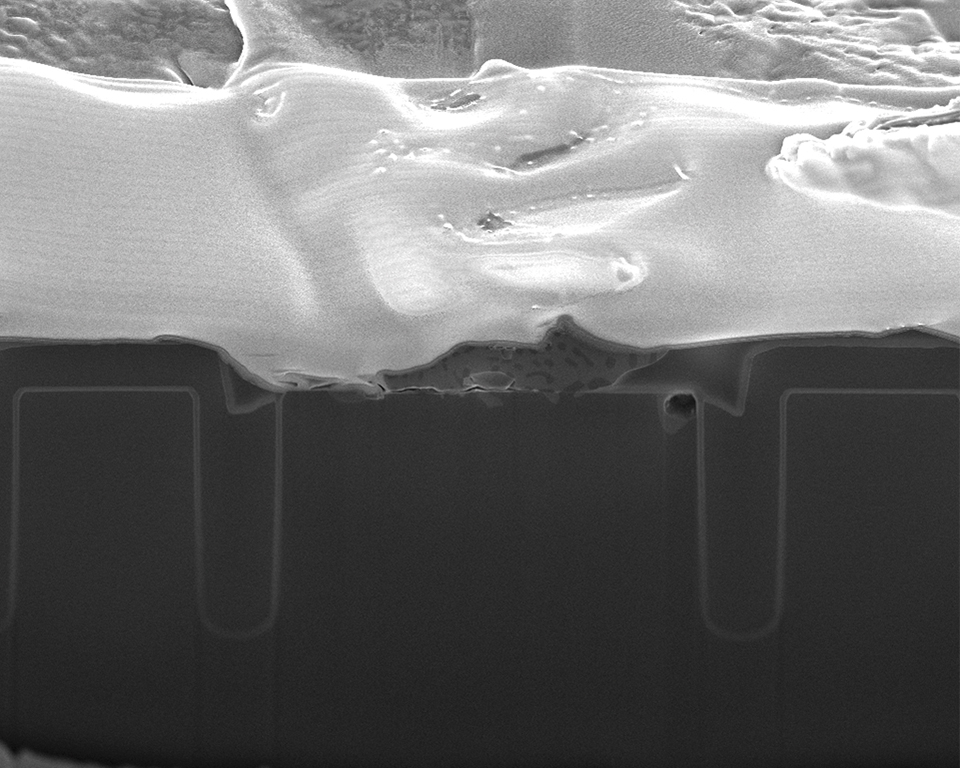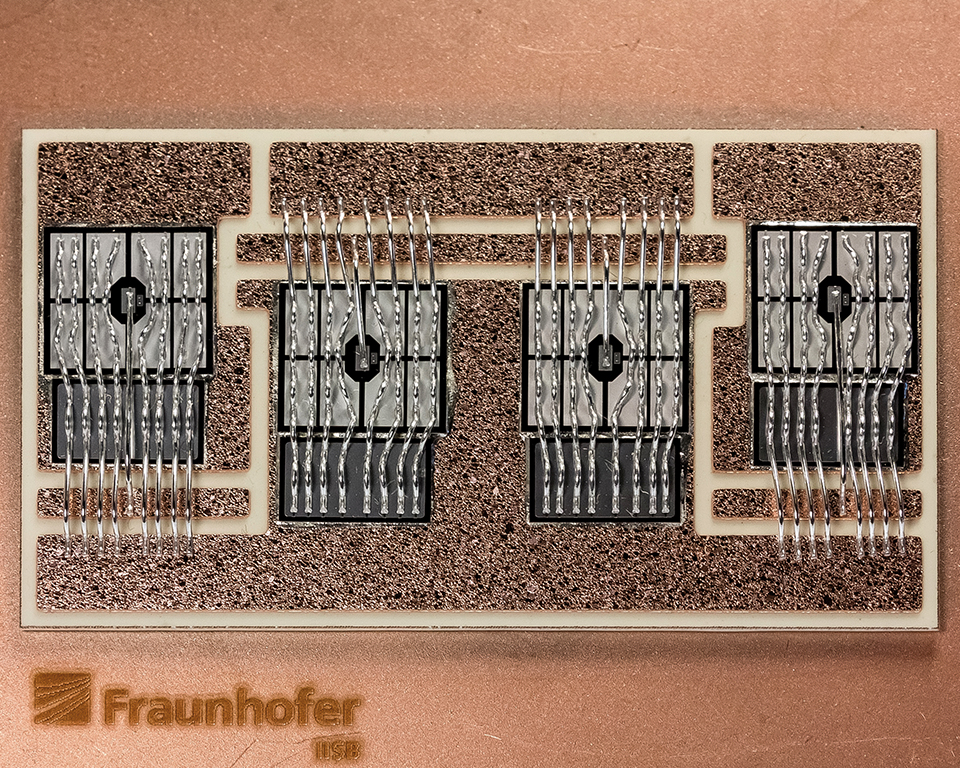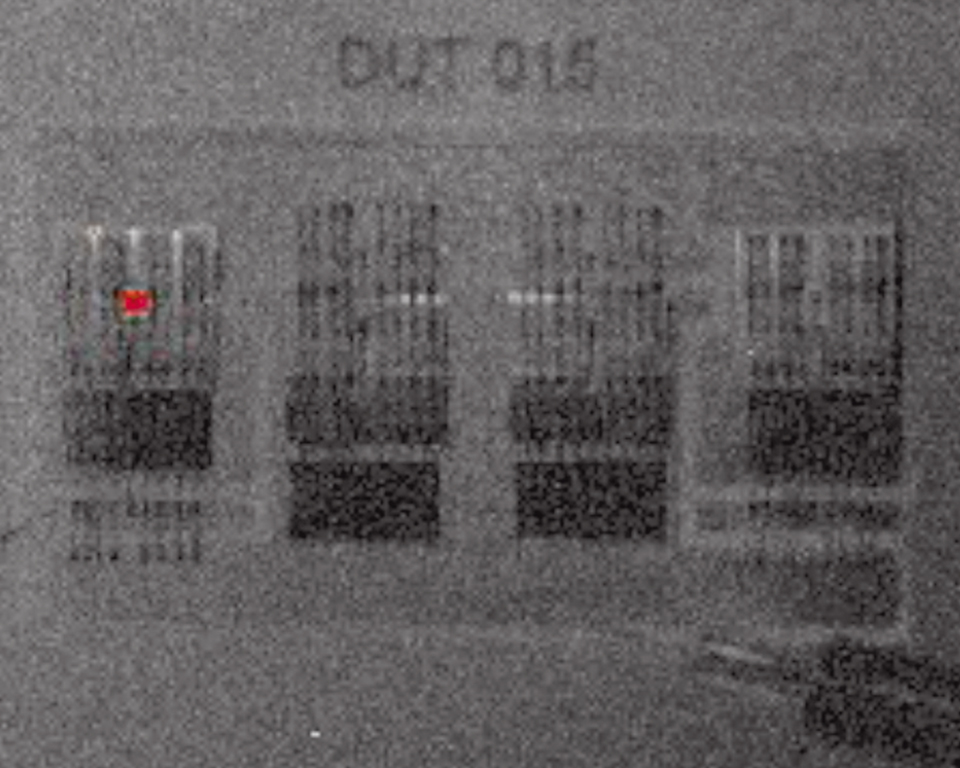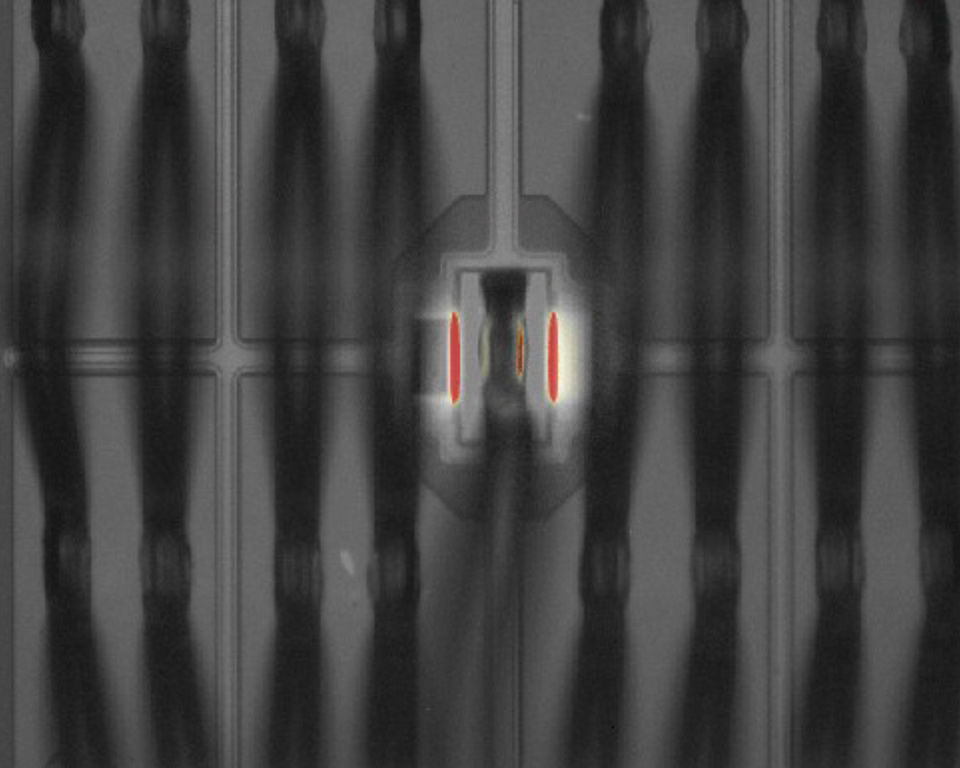Description of lock-in thermography analysis
- Detecting of failed power electronic devices such as IGBT, MosFETs, diodes, and resistors
- Analysis of short circuits, ESD defects, oxide damages, edge termination defects, avalanche brake down, whiskers, and electrical conductive contamination
- High sensitivity for hot spot detection with a heat dissipation in the μW range
- 2D / 3D defect localization for further destructive analysis to identify the failure mechanism
 Fraunhofer Institute for Integrated Systems and Device Technology IISB
Fraunhofer Institute for Integrated Systems and Device Technology IISB
